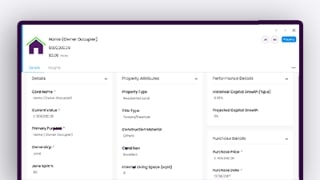With a rate cut potentially on the horizon, now is the time to prepare and stay ahead of the market. Being proactive and acting early can help you improve your financial position, take advantage of new opportunities, and avoid the rush once the market reacts.
To do this, Ben Kingsley, the founder of budgeting app Moorr and Managing Director at Empower Wealth, suggests three key steps for action, including:
1. Review Your Loans and Get Pre-Approval
When a rate cut happens, lenders often introduce new deals, but the rush of borrowers looking to refinance can lead to delays. Reviewing your current loans now ensures you’re well-positioned to act quickly and avoid being caught up in the post-rate-cut frenzy.
- Review your mortgage and other loans: Check if you are on a competitive rate or if refinancing could reduce your repayments.
- Look into pre-approval options: Getting pre-approval now ensures you can act immediately when new deals emerge.
- Consider fixed-rate offers: Interestingly, some 1- and 2-year fixed rate specials are appearing—often a signal that rates are about to drop. Depending on your circumstances, you could consider hedging your bets with a part-fixed, part-variable strategy. However, please consult your broker to explore what works best for you.
“Speaking with a broker before the rate cut ensures you’ll be ready to move quickly when opportunities arise. With pre-approval and a strategy in place, you’ll avoid unnecessary delays and secure the best rates available,” Ben Kingsley said.
2. Optimise Your Cashflow and Prepare for Extra Funds
A rate cut can reduce your loan repayments, freeing up extra cash. Planning ahead helps you decide how to use these savings effectively, whether for debt reduction, future investments, or building a financial buffer.
- Use MoneySTRETCH on Moorr to review your current budget and cashflow projections.
- Simulate potential scenarios, such as a cash rate drop of 0.25% or 0.5%, to see how your repayments might change.
- With the 36-month forecast feature, plan how you’ll use any extra cash—whether to pay down debt faster, create a savings buffer, or fund new opportunities.
“Knowing how you’ll allocate extra funds keeps you focused whether that means accelerating debt reduction or building reserves for future investments. Planning ahead ensures you’ll be in control when the rate cut takes effect,” Ben Kingsley said.
3. Get Ready to Act Before the Market Heats Up
When a rate cut happens, market sentiment can shift quickly, leading to more competition for property. Without a clear plan and the right experts in place, you might miss out on good deals or face delays.
- Revisit your financial goals: Ensure they align with your long-term plans, whether it’s buying property, paying off debt, or improving your financial position.
- Assemble your A-team early: This includes your broker, financial advisor, and buyer’s agent. Finding the right experts takes time, so starting now will ensure you’re ready to act when the market shifts.
- Explore the property market: With supply still relatively high in many areas, acting before demand increases could give you an edge.
“Don’t wait for the competition to build. By assembling your team early and having a plan in place, you’ll be ready to make confident decisions before the market heats up,” Ben Kingsley said.
This article was featured on The Mercury Paper in October 2024.











